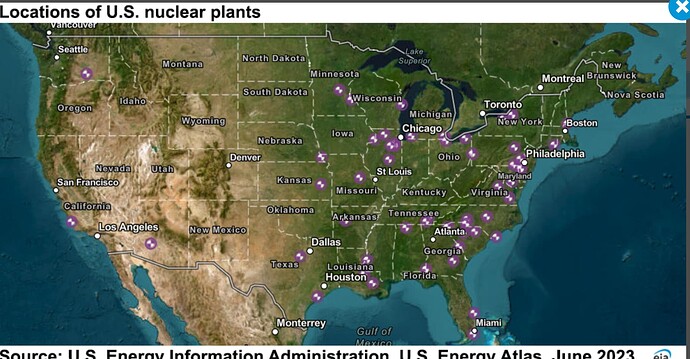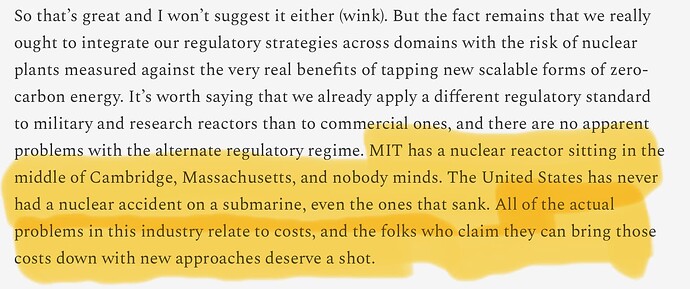“I can’t see the vapor therefore it can’t hurt me” - No living tankerman…
This devastating fly ash spill happened pretty close to me, and is just one example of the myriad hazards coal plants pose to their local environments, to say nothing of the wider environmental effects of the invisible particulates they spew.
Sure, there are technologies out there that make coal power plants a lot cleaner, but it’s been nothing but resistance from the industry to actually install those scrubbers etc, and I can’t imagine you complaining if our current administration rolled the regulations back that require them. They’re expensive, but they do help. Without them, coal is wildly irresponsible. If the health effects of burning coal were taken into account, it would never have been nearly as cheap as it’s been advertised to be.
But at least we have those new systems being installed around the country. I’m not sure Australia is so progressive.
As a self-described environmentalist, I’m staunchly pro-nuclear, and just about everybody I talk to from just about every political corner is pretty much in agreement. I’ve had a hard time finding anybody who needs convincing that nuclear is a good idea. Nuclear power in this country, and in general, has a couple problems - principally engineering and legislative problems, at this point.
First, Generation II power plants (which are pretty much all operating commercial plants, and include Three Mile Island and Fukushima) were built with what seemed to be reasonable engineering philosophies that turned out to have unanticipated problems.
One of the first problems is energy density. Our first reactors were designed for naval use, and a naval powerplant needs to be compact and powerful. Our first reactor engineers and operators were, therefore, trained by the Navy and knew how to design things for the Navy. When the call came out to design commercial plants, they essentially took naval designs and scaled them up. The problem with an energy-dense reactor of the type necessary for naval applications is that you need to keep it carefully controlled, and if you lose the ability to control the heat it generates (such as by losing water circulation, like Three Mile Island and Fukushima) you have created a potential “dirty bomb.”
The second philosophical problem was the belief that, if you simply piled enough active safety systems on top of a reactor, nothing could feasibly go wrong. Experience has shown this to be completely incorrect - these plants designed to be hyper-safe proved that, when things really went wrong, it was frequently impossible to determine what the true problem was amid a deluge of alarms and blinking indicators.
The third problem is the regulatory body that was developed in response to the perceived needs of these Gen II plants. If you’re building an energy-dense reactor, you have to build it to extremely tight tolerances. If you’re building a system reliant on a pile of actively-driven safety systems, you have to build them to be perfectly reliable. Proving that your new gigawatts of Gen II generating capacity have been built to extremely tight tolerances with perfectly reliable safety systems is e x p e n s i v e.
The solutions are already deep into the design phase and in some cases already in limited service. Generation III and III+ designs, which came about principally in reaction to the TMI 2 meltdown and first started entering service in the '90s, differ from Gen II primarily by using a “passive safety” philosophy instead of “active safety.” Many Gen II plants will happily run themselves right out of control if you don’t have a steady hand on the highly complicated controls. Gen III+ plants, by contrast, will happily shut themselves right down if you don’t have a steady hand on the greatly reduced controls. This simple paradigm shift improves their safety by orders of magnitude. It’s like a train’s emergency brakes - you have to apply air pressure to release them. A failure is what activates the safety mechanisms. In reactor design, this often means failsafe systems that are gravity or convection driven and require no pumps or powered valves. These reactor designs are superb and would be great to mass produce.
Engineers are working on Gen IV designs now, though, and have been for a while. While there’s no real definition of a “Gen IV” design, one of the biggest paradigm changes for them has been the intent to design reactors that cannot self-destruct, no matter how badly you drive them, because they lack the energy density to blow up in the first place. If you’re building a nuclear power plant, chances are real estate is the least of your concerns. If you want to build a gigawatt reactor, there’s no reason you can’t just… build the reactor bigger. A bigger reactor of the same power will be much harder, if not impossible, to catastrophically overheat. The loss of efficiency is hardly a problem when the fuel is such a small part of your operating costs.
But, in the interim since Gen II plants were the new hotness, the regulatory environment has grown to manage them. This means that anything nuclear has to go through the Raised-on-Gen-II Nuclear Regulatory Commission. There’s been a lot of effort put into deciding how much to loosen the regulations for newer, safer designs, but I haven’t seen as much progress on actually loosening them. The high-quality materials required, meanwhile, have also gotten a lot more expensive since the bulk of our plants were built in the 70s and 80s. So, cost is now a much bigger issue than it used to be simply for the up-front investment.
But what about nuclear waste? Frankly I see no problem with encasing it in concrete and dropping it into oceanic subduction zones. Hardly anything lives in the deep ocean trenches, the currents are stagnant, and if you wrap it in enough cheap cement, it’ll be returned to the Earth from whence it came before any radioactive pollution could occur.
Tangentially, there’s also a lot of hype around small modular reactors of the type NuScale and Oklo are publicly working on. While I’ve invested in them (and they’re currently by far my most successful investments!) I’m not personally fully convinced. Building an itty bitty nuclear plant requires most of the same sorts of materials, the same sorts of trained operators, and the same sort of oversight as building a monster like Palo Verde near my current home. If you need to have a guy run a reactor control room, the difference in reactor size makes about as much difference as it does for the watch officer on a handysize tanker vs a ULCC. Building small reactors costs you the economies of scale that I would expect future nuclear power to need to be truly viable.
So, TLDR, coal dirty and not as cheap as it pretends, nuclear good and not as cheap as it should be.


